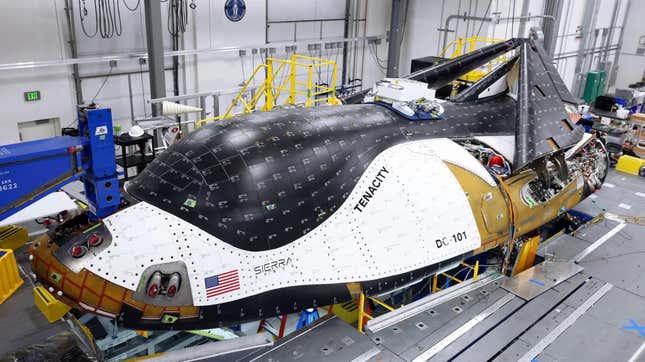Dream Chaser, built by Sierra Space, is being prepped for transport to a NASA facility in Ohio, where it will undergo a series of tests to make sure the spaceplane can survive its heated reentry through Earth’s atmosphere. Starting these tests is crucial, demonstrating Dream Chaser’s readiness for flights and potentially transforming commercial space travel.
Sierra Space is hoping to see its spaceplane fly to the International Space Station (ISS) in 2024 as part of a contract with NASA. The first commercial spaceplane is currently at the company’s facility in Louisville, Colorado, and will soon make the roughly 60 mile (96 kilometer) journey to the Neil Armstrong Test Facility in Sandusky, Ohio, local media outlet Denver 7 reported.
The Colorado-based company was awarded a NASA Commercial Resupply Services 2 (CRS-2) contract in 2016, under which it will provide at least seven uncrewed missions to deliver cargo to and from the ISS. Sierra Space is targeting 2024 for the inaugural flight of the first model of the Dream Chaser fleet spacecraft, named Tenacity, from the Kennedy Space Center in Florida.
[…]
Dream Chaser is designed to fly to low Earth orbit, carrying cargo and passengers on a smooth ride to pitstops such as the ISS. The spaceplane will launch from Earth atop a rocket, and is designed to survive atmospheric reentry and perform runway landings on the surface upon its return. Sierra Space’s Dream Chaser is designed with foldable wings that fully unfurl once the spaceplane is in flight, generating power through solar arrays. The spaceplane is also equipped with heat shield tiles to protect it from the high temperatures of atmospheric reentry.
Unlike Virgin Galactic’s suborbital spaceplane, Sierra Space designed Dream Chaser to reach orbit and stay there for six months. The U.S. Space Force has its own spaceplane, which wrapped up a mysterious two-and-a-half-year mission in low Earth orbit in November 2022.
[…]
For its debut flight, Tenacity will ride atop United Launch Alliance’s Vulcan Centaur rocket. The spaceplane is scheduled for the rocket’s second mission, although Vulcan is yet to fly for the first time due to several delays. The spaceplane is tentatively slated for an April launch, but that still depends on the rocket’s first test flight.
In the future, Sierra Space also wants to launch crewed Dream Chaser missions to its own space station, as opposed to the Orbital Reef space station, which it is designing in collaboration with Jeff Bezos’ Blue Origin—a relationship that appears to be in doubt.
Source: World’s First Commercial Spaceplane Faces Crucial Test at NASA

Robin Edgar
Organisational Structures | Technology and Science | Military, IT and Lifestyle consultancy | Social, Broadcast & Cross Media | Flying aircraft

